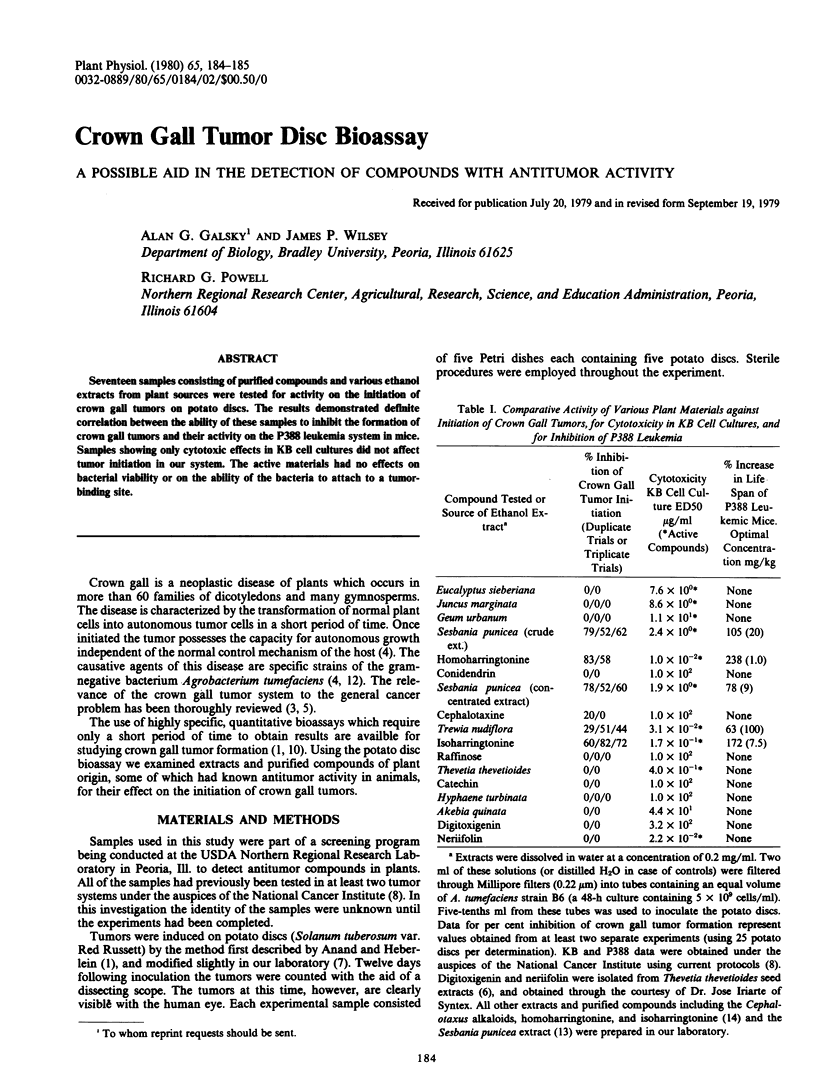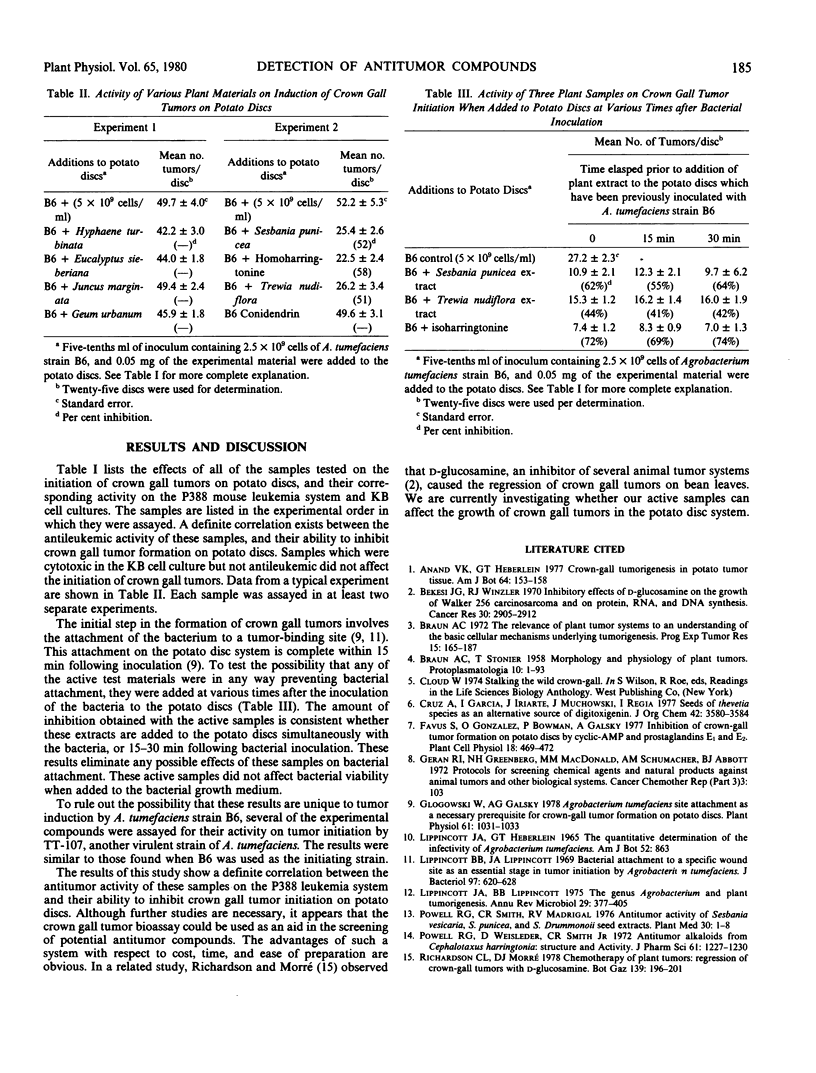Abstract
Seventeen samples consisting of purified compounds and various ethanol extracts from plant sources were tested for activity on the initiation of crown gall tumors on potato discs. The results demonstrated definite correlation between the ability of these samples to inhibit the formation of crown gall tumors and their activity on the P388 leukemia system in mice. Samples showing only cytotoxic effects in KB cell cultures did not affect tumor initiation in our system. The active materials had no effects on bacterial viability or on the ability of the bacteria to attach to a tumorbinding site.
Full text
PDF

Selected References
These references are in PubMed. This may not be the complete list of references from this article.
- Bekesi J. G., Winzler R. J. Inhibitory effects of D-glucosamine on the growth of Walker 256 carcinosarcoma and on protein, RNA, and DNA synthesis. Cancer Res. 1970 Dec;30(12):2905–2912. [PubMed] [Google Scholar]
- Braun A. C. The relevance of plant tumor systems to an understanding of the basic cellular mechanisms underlying tumorigenesis. Prog Exp Tumor Res. 1972;15:165–187. doi: 10.1159/000392513. [DOI] [PubMed] [Google Scholar]
- Cruz A., García I., Iriarte J., Muchowski J. M., Regla I. Seeds of Thevetia species as an alternative source of digitoxigenin. J Org Chem. 1977 Oct 28;42(22):3580–3584. doi: 10.1021/jo00442a029. [DOI] [PubMed] [Google Scholar]
- Glogowski W., Galsky A. G. Agrobacterium tumefaciens Site Attachment as a Necessary Prerequisite for Crown Gall Tumor Formation on Potato Discs. Plant Physiol. 1978 Jun;61(6):1031–1033. doi: 10.1104/pp.61.6.1031. [DOI] [PMC free article] [PubMed] [Google Scholar]
- Lippincott B. B., Lippincott J. A. Bacterial attachment to a specific wound site as an essential stage in tumor initiation by Agrobacterium tumefaciens. J Bacteriol. 1969 Feb;97(2):620–628. doi: 10.1128/jb.97.2.620-628.1969. [DOI] [PMC free article] [PubMed] [Google Scholar]
- Lippincott J. A., Heberlein G. T. The quantitative determination of the infectivity of Agrobacterium tumefaciens. Am J Bot. 1965 Sep;52(8):856–863. [PubMed] [Google Scholar]
- Lippincott J. A., Lippincott B. B. The genus Agrobacterium and plant tumorigenesis. Annu Rev Microbiol. 1975;29:377–405. doi: 10.1146/annurev.mi.29.100175.002113. [DOI] [PubMed] [Google Scholar]
- Powell R. G., Smith C. R., Jr, Madrigal R. V. Antitumor activity of Sesbania vesicaria, S. punicea, and S. drummondii seed extracts. Planta Med. 1976 Aug;30(1):1–8. doi: 10.1055/s-0028-1097684. [DOI] [PubMed] [Google Scholar]
- Powell R. G., Weisleder D., Smith C. R., Jr Antitumor alkaloids for Cephalataxus harringtonia: structure and activity. J Pharm Sci. 1972 Aug;61(8):1227–1230. doi: 10.1002/jps.2600610812. [DOI] [PubMed] [Google Scholar]


